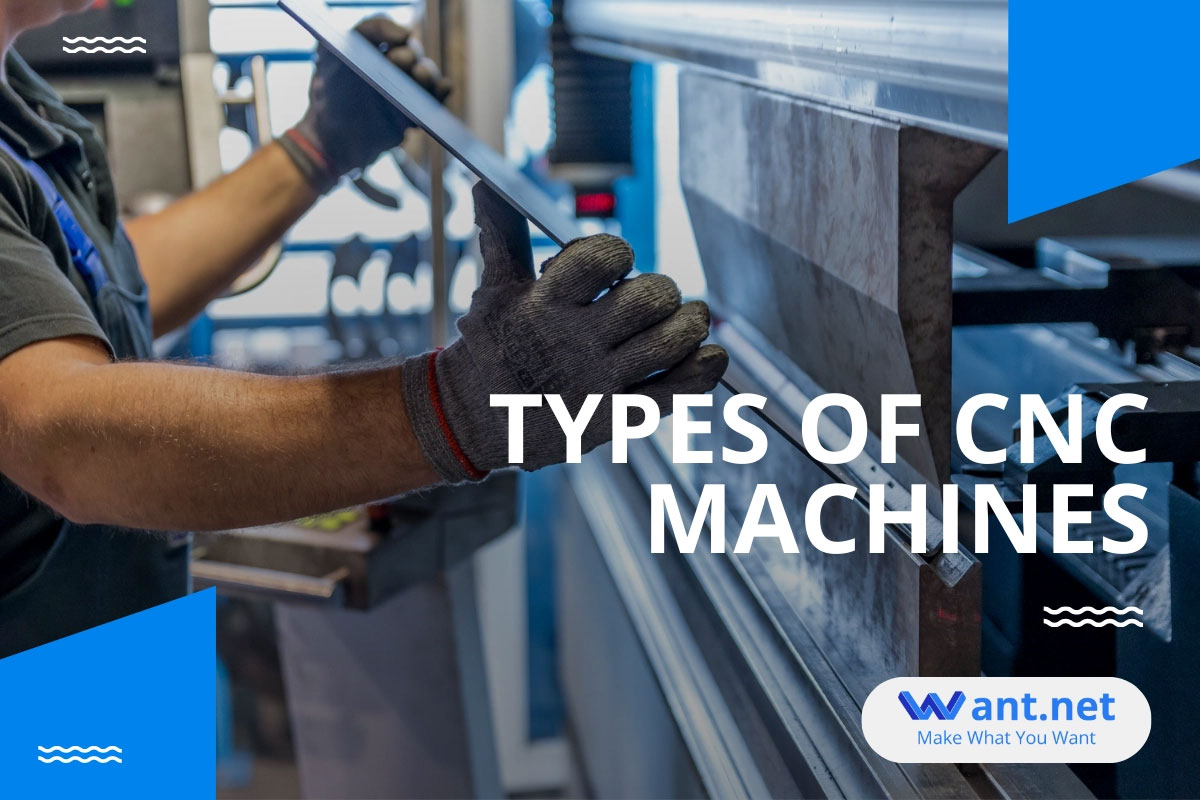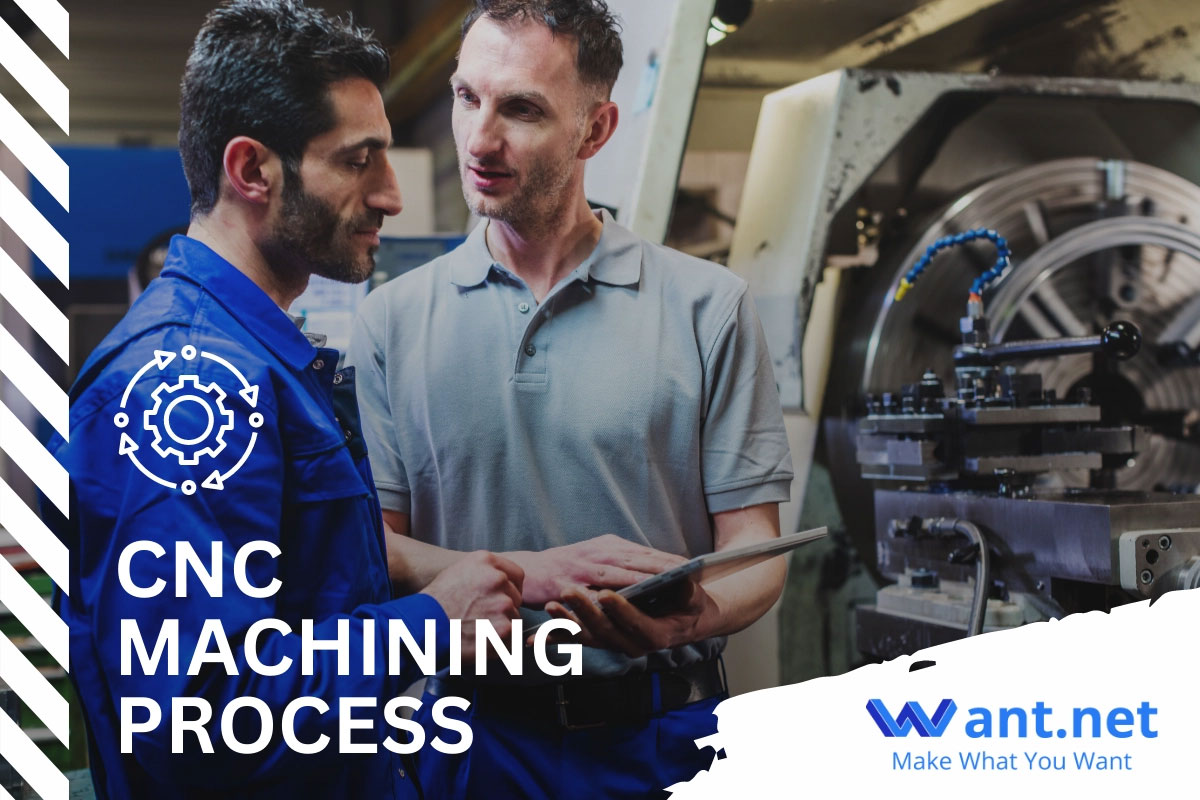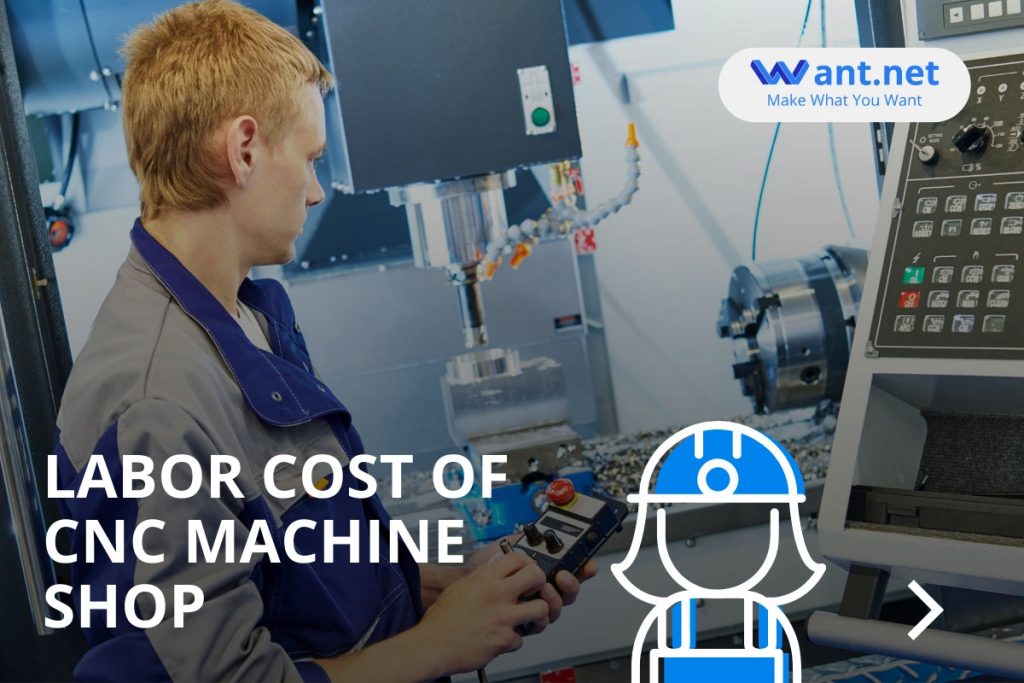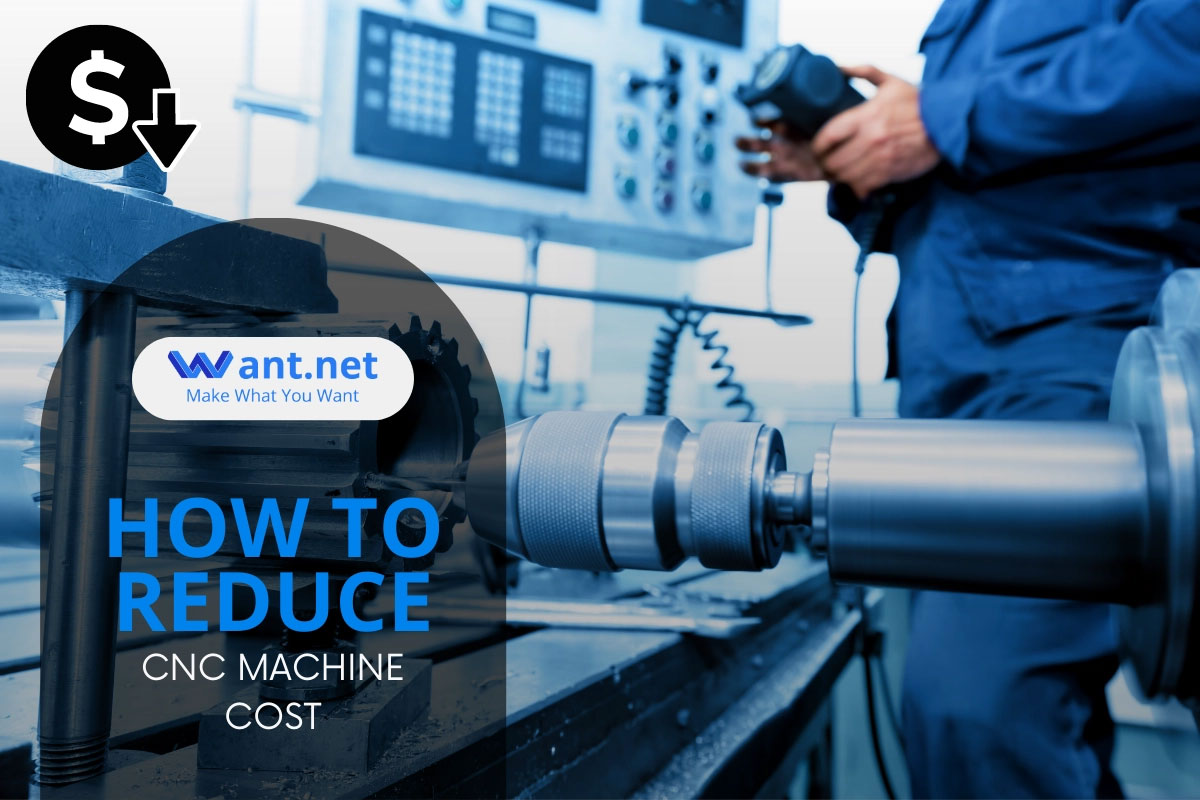CNC machining is a modern and demanding industry nowadays. CNC machining is primarily used to produce speedy prototypes, exact CNC machined parts, technical instruments, and metal tools because of its high demand and use of CAD and CAM software.
Online CNC machine shops often use CAD and CAM software as well as other resources in their manufacturing processes to satisfy the demands and capabilities of the industrial sector.
There are no fixed costs in CNC machining that can be applied consistently to various machining projects. Many factors affect the cost of a CNC machining project. Because cost is an essential consideration in most operations, it is crucial to understand those factors and how they affect cost.
You can improve your CNC machining projects to make the most of them with the help of this article, which will help you understand the key elements that affect CNC machining costs.
What is a CNC Machine?
Computer numerical control (CNC) machines are automated machines controlled by computers that carry out pre-programmed, controlled command sequences. CNC machines are the opposite of “ancient” machines that are manually operated by hand wheels or levers or manually automated by cams.
Modern CNC machines can understand and operate using G-code language for CNC machining, which provides accurate production measurements, including feed rate, speed, direction, and coordination.
What Is Metal CNC Machining Definition?
CNC is an abbreviation for Computerized Numerical Control. It is an automated manufacturing process in which production equipment is moved under pre-programmed software and code control.
CNC machining is used to control various complicated types of machinery, such as grinders, lathes, and turning mills, which are all used to cut, shape, and manufacture various components and prototypes.
What Are the Types of CNC Machines?

- CNC laser cutting machine
- CNC Lathe Machine
- CNC Milling Machine
- CNC router Machine
- CNC Plasma Cutting Machine
- 5-axis machine
- 3-D Printer
- Pick and Place Machine
What Is CNC Machining Process?
CNC can be applied to a wide range of production processes and machinery. This article focuses on subtractive machining processes, and the tools used are frequently referred to as cutting machine tools.

Milling is a process where the material is removed while the spindle spins.
Turning is removing material while the cylindrical workpiece rotates around a stationary spindle.
Cutting a hole into the workpiece through drilling.
Grinding is a process for removing small amounts of material using a rolling, abrasive wheel.
Sawing is cutting material (into pieces) with a blade.
Finishing processes: Filing is primarily used in deburring and involves removing small amounts of material while combining grinding and sawing.
Brushing and polishing include using an abrasive procedure to produce a shiny or smooth surface.
The abrasive processes mentioned above are also known as conventional machining. This article only includes some of the processes that fall under material-removing methods, including EDM (electrical discharge machining), laser, and water-jet cutting.
Hybrid machines can occasionally combine machining operations with additive manufacturing techniques.
How to Reduce CNC Machining Costs?
Some considerations in start-up costs, machining time, and material costs can help lower overall CNC machining costs even when some requirements cannot be changed. Manufacturing engineers and specifiers can take the following actions to reduce CNC machining costs effectively:
Design Simplification: Create components with easily machined features. Standard machining tools can create holes, threads, slots, and curves more cheaply than those that call for specific hole or thread sizes.
Rounded Corners: Additional machining processes are needed to create a sharp, 90-degree corner. CNC machining costs can be decreased by switching from a 90-degree internal corner design to a rounded one. Making the interior corner radius at least one-third of the cavity depth would require an additional step.
Cavity Depth: CNC machining can be a time-consuming and expensive process when removing material to create a deep cavity. The depth of cavities created by CNC cutting tools should generally be between two and three times their diameter. Wherever possible, try to keep cavity depths to a maximum of four times their length.
Wall Size: Thinner walls are more fragile and prone to fracture, which makes them more difficult to manufacture. Walls should be thicker than 0.8 millimeters, depending on the required weight. Insert holes and threads properly to reduce the possibility of fracturing.
Thread Length: It could be necessary to use specialized tools to manufacture threads that are longer than 1.5 times the diameter of the hole. In order to minimize costs, set the maximum length at three times the diameter.
Material Machinability: Try to specify those that are simple to the machine unless you have specific reasons to select a particular material. Certain metals are more flexible throughout the machining process, cutting labor costs.
Tolerances: Examine your specifications to see if any essential tolerance requirements exist. A design that requires high levels of precision might cost more. Although specific industries need tight adherence to requirements, cost savings can be obtained if your tolerances can be more flexible.
Quantity: Place bigger bulk orders when possible to reduce machining setup time.
What Is the Labor Cost of a CNC Machine Shop?
CNC machining requires an experienced engineer to create product drawings that include dimensions, tight tolerances, raw material requirements, surface treatment requirements, and so on.

A technical engineer effectively made a machining program using MasterCam for the operator to use when milling the custom parts using the required CNC machinery. Since the design setup fee is a one-time charge, orders of 1 piece will have the same design fee as orders of enormous quantities.
The main labor costs associated with CNC machining are the start-up costs (CAM programming, process design), which are one-time costs that increasing production rates can avoid.
The development of CNC machining has yet to progress much in recent years. The cost of CNC machined components is not considerably affected by incremental advancements in machine design, tooling, consumables, and CAM software, which optimize production cycles and improve quality.
What Are CNC Milling Machines?
CNC milling machines are cutting tools that use computer numerical control (CNC) systems for programming and management to remove materials from a workpiece precisely. A particular item or product designed using computer-aided design (CAD) software is the result of the CNC machining process.
Typically, these machines contain a primary spindle and three linear axes for positioning or moving the component to be machined. More advanced ones may feature a 4th or 5th rotational axis to machine more exact forms of varied dimensions and sizes.
What Is the Function of a CNC Milling Machine?
A CNC milling machine or CNC machining center works on the general principle of clamping the object to be processed on top of the machine table. It could be secured by a vice or fixture or clamped to the table itself.
After that, the spindle (moving section) with the cutting tool is positioned vertically or horizontally. The device can then reach various X-Y-Z positions on the workpiece and begin cutting and shaping actions.
While it does so, the table can fix, mount, or move/position the workpiece or part linearly to the spindle with the cutting tool.
As a result, the material may be removed to achieve the appropriate shape for the machined part. A CNC milling machine can be either vertical or horizontal.
How Much Does CNC Machining Cost for Metal Parts?
A 3-axis CNC machine typically costs $40 or so per hour to CNC machine. The hourly salary for CNC milling machine operators can be $30 to $50. Hence, the total cost of CNC services would be about $80 per hour. Better quality and more advanced CNC machines are more expensive.
What Is CNC Milling Cost?
A 3-axis CNC milling typically costs $10 to $20 per hour. CNC turning typically costs roughly $15 per hour. The reason is that operating a CNC turning machine is more straightforward and less expensive. Yet, the price of 4- or 5-axis CNC machining is between $25 and $30.
What Are CNC Programming Costs?
An hourly rate for a 3-axis milling machine is about $40, whereas a 4-axis or 5-axis model might range from $75 to $120. Pricing is determined by the type of finish (rough or smooth), and the client will be charged for the material costs.
Can We Save CNC Machining Costs for Custom Parts?
The cost of the machining components is directly related to the quantity you order. Purchasing mass amounts of the same machining elements may boost manufacturing efficiencies. It dramatically lowers the machining costs of CNC and components per piece.
Most materials, such as aluminum, titanium, steel, brass, plastic, wood, etc., can be machined using CNC machining in various custom designs. CNC machining is a subtractive manufacturing technology that produces considerable waste when the material is removed from the original block.
Usually, the price of your material is given per 6″x6″x1″ sheet. Some popular polymers have the following sheet prices:
- ABS blocks are $17 each
- POM (Delrin) blocks cost $27 each.
- A block of nylon 6 costs $30.
Some common metals with reasonable prices for CNC-machined parts are:
- Each block of aluminum 6061 costs $25
- Blocks of aluminum 7075 cost $80 each
- Each block of stainless steel 304 costs $90.
How Much Do CNC Machining Services Cost?
The most popular CNC machines in a CNC machine shop include CNC milling, CNC turning, CNC lathe, CNC grinding, and CNC router. There are many different types of CNC machines available. When choosing the type of CNC machine for a custom-machined part, we mainly consider the precision and cost per hour.
A 3-axis CNC milling machine typically costs between $20 and $30 per hour (including the operator’s salary of $10).
3-axis CNC Turning machines are generally priced lower, around $20 per hour, because of their simpler operation and lower machinery cost,
The average cost of 4-axis or 5-axis CNC milling machining ranges from $35 to $50 or higher because of the high cost of machinery and the complexity of the operation,
We should use a more basic CNC machine to produce our CNC machining custom parts depending on the technical designs for the materials, components, and quality criteria. A skilled manufacturing engineer can help us determine which CNC machining method to use for the best price, quality, and quick delivery.
What Is the Hourly Rate for A 5-Axis CNC?
An hourly rate for a 3-axis milling machine is about $40, whereas a 4-axis or 5-axis version might range from $75 to $120.
Other Articles You Might Enjoy
- Using CNC Machining to Fabricate Lightweight Metal and Remove Chrome From Metal( cnc machining services china Dana)
CNC (Computer Numerically Controlled) machining is an essential process in the manufacturing domain. With its precision, adaptability, and extensive applications, many industries rely on it for fabricating highly complex parts…
- Efficient CNC Machining of Lightweight Metal and Chrome Removal( cnc machining services china Atwood)
Computer Numerical Control (CNC) machining is a modern manufacturing process used in various industries, frequently dealing with lightweight metals or needing to remove chrome from metal surfaces. This article will…
- Precision CNC Machining for High-End Audio Equipment
Precision CNC Machining in High-End Audio Equipment Manufacturing Precision Computer Numerical Control (CNC) machining refers to a highly-advanced technology where computer-generated codes are used to operate factory machinery and tools.…









